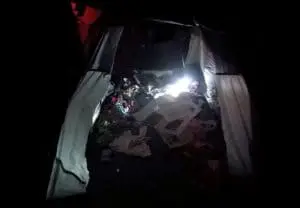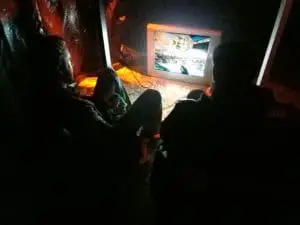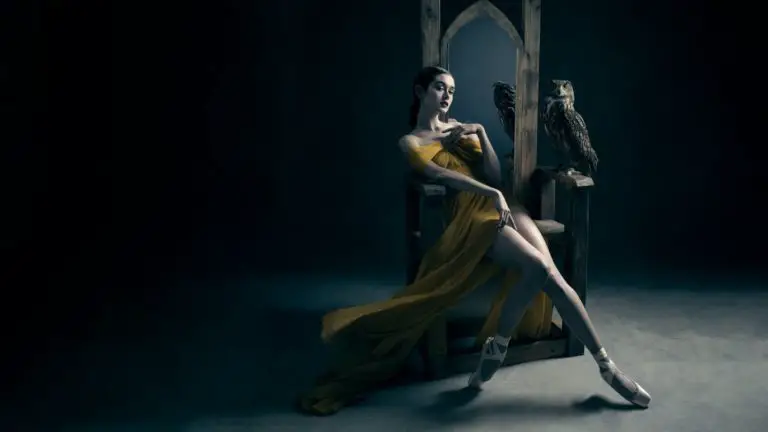I enter a room draped in darkness. A small pedestal a few feet away is illuminated by the only light in the room. I approach it and find a letter. I read it, disgusted by it words.
“All women are liars; all women will destroy you if given a chance; all women are your mother.”
The light turns off over the pedestal and a second illuminates a desk. A woman in a suit is seated behind it feverishly writing letters. I cross the room and sit in a chair in front of the desk. She looks up and locks eyes with me. After a deep-breath, she begins to talk.
“Use your brain for once. You expect me to be honest when you know I anticipate you overreacting, just as my mother always did. You’ve done it in the past, you’ve done it now, and you’ll do it in the future.”
She continues to berate me, blame me for her failures, and crush my spirit until I feel tears welling up my eyes. Everything is my fault. I am frozen in my chair as the weight of all her blame becomes increasingly uncomfortable and painful. But then she stops. She apologizes; everything is fine, let’s just move past this. She circles the table and grabs my hand. Holding it tightly, I am led into the next room. She then leads forward and whispers:
“I love you.”

This cycle of manipulation is inspired from actual events experienced by the Fear is What We Learned Here creative team. They extracted feelings of verbal manipulation, pain, and sexism from their lives and put them to paper—making those emotions real. The feelings were tangible for anyone that has lived relationships like this—and even for some who haven’t. Information and language can be used as a powerful weapon to define a person’s reality. But information is only one example of how people can be manipulated by another—and Screenshot Production’s Fear is What We Learned Here is an exploration of the various ways that fear and power can be used for social and political control.
The backbone of this experience is the strong theme that is clearly the focus of each and every scene. Rather than focus on a continuous narrative, F I W W L H is organized as short vignettes that all focus on the theme of fear and control; and this theme is never shy either. It is the main focus of every room, but the empathetic response takes a while to build. By varying the nature in which fear, manipulation, and power is presented, F I W W L H finds its emotional connection to the audience about a third of the way in and is able to maintain a consistent tone throughout the remainder of the show. A feeling of unease is created by openly discussing issues of religious control, social injustice, the use of torture—and your role in it all. And the strong acting further helps support the message. Standouts Bryan Noonan and Dolores Quintana command their scenes and create an atmosphere of empathy for the audience.

Further, F I W W L H varies the audience’s role, exposing them to all sides of control. Most of the time, participants are the one who must endure the fear and manipulation; but in one scene, the audience member is told to use fear to gain something necessary. Channeling the famous Milgram experiment, participants must decide if they will blindly obey an authority figure or rebel against it. This element of choice is a huge success for the show: it is up the audience to determine how they want to proceed. Comply or rebel—it is your choice.
Finally, Screenshot strengthen their message through a complimentary set design. Scenes are minimalistic, which remove any distractions and allow full focus on the actors. Exploration is rewarded, as each room contains items that further the narrative if they are uncovered. And instead of simply walking between scenes, participants are forced to crawl through tents to transition to the next area. These tents often contain clothes (sometimes wet) and are littered in trash. These produce an overall feeling of discomfort that is hard to shake after the show.

Despite the overall success of the show, the experience does have one area of improvement. The later scenes are emotionally charged, offer choice, and force the audience to consider their place in the larger context of social issue; but a few of the earlier scenes lack that message. One of the first scenes has the audience playing video games with a friend. It is a commentary on how common place violence is in our lives and the apathy we have towards it—but the scene just felt fun and nostalgic to me, lacking the emotional response the remainder of the experience delivered. Despite the lack of a resonance with this room, it was unable to detract from the response of the subsequent scenes.

Overall, Screenshot Productions produced an emotional experience with a strong theme, powerful acting, and a set design that supported it all. The show provided an intimate and in depth look at fear and the control it provides. It forced participants to live this fear, providing a gambit of emotions that lingered long after the show concluded. And similar to other Screenshot Productions experiences, the audience leaves empowered to go out and make a difference.
“What can you do to raise the voice of those who don’t have a voice?”





